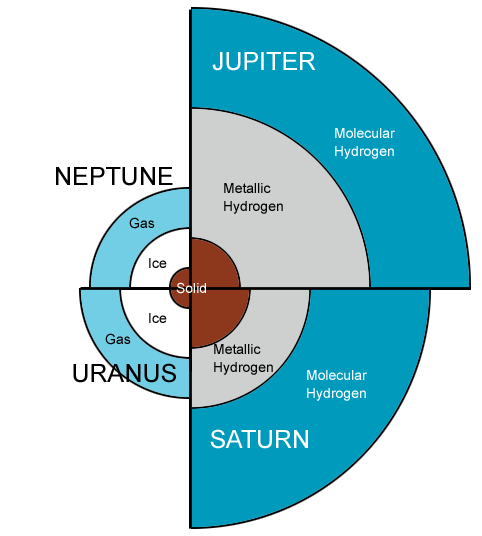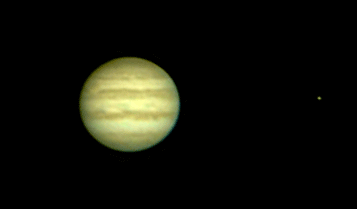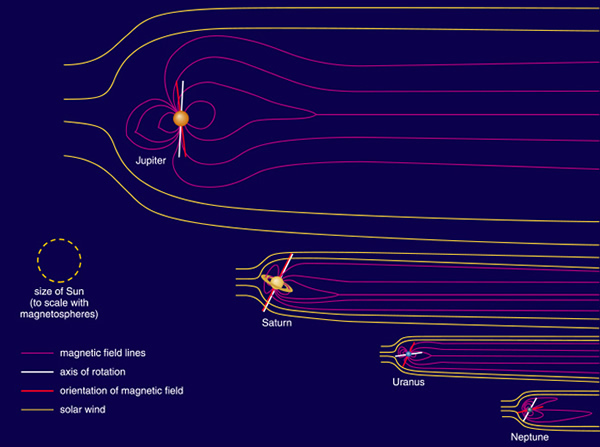Let's take a brief look at each one, as seen by the Hubble Space Telescope:
Jupiter
Saturn
Uranus (IR image)
Neptune (rotation movie)
From these images, we can see the surfaces of the planets (not really a solid surface at all, just cloud tops). All four of the jovian planets (gas giants) rotate rapidly: Jupiter 9h 50m;
Time lapse movie showing Jupiter rotation over about 1 hour,
taken on 2004 Apr 20. Note the moon to the right, and the great red spot.
Saturn 10h 20m; Uranus 16h 33m; Neptune 17h 16m. Because they have
no solid surface, they all experience differential
rotation (the equators rotate more rapidly than the poles).
Lecture Question
#1
But what are they like inside?
In fact, we do not really know very much for certain about the interiors of
the giant planets. We only have a few clues to help us to guess.
Here is how it is done:
- We know the original makeup of the solar nebula. We know the masses and sizes (and hence, the densities) of the planets. We know how matter behaves at high densities and pressures, from laboratory experiments and basic physics. We can measure the planets' energy input (from the Sun) and energy output (reprocessed energy from the Sun, along with some internally generated energy), so we can get the temperature.
- For one planet, Jupiter, we sent a probe into the atmosphere.
- What looks like the outer edge of the planets is not a solid surface--it is just the cloud tops. The clouds are made of solid particles (like snow flakes), droplets (like rain), and gases. But the stuff is hydrogen compounds (methane, ammonia, and water). Although these clouds are 75% hydrogen and 24% helium, the trace amounts of these compounds is responsible for all of the cloud colors and other visible features. The distances of the planets from the Sun are very different, each one being almost twice as far as the previous one
- Jupiter -- 5 AU Saturn -- 10 AU Uranus -- 20 AU
- Neptune -- 30 AU
- The relative sizes and makeup of the interiors is like this:

- Note the inner layers of metallic hydrogen -- a form of hydrogen that occurs with the tremendous pressures found inside Jupiter and Saturn, where the hydrogen is so compressed that the atoms share electrons. The electrons can flow freely from one atom to the next, just as in metals, so that it is electrically conducting. This is what generates the strong magnetic fields of Jupiter, and also Saturn.
- Notice that Neptune and Uranus are too small and cold to have metallic hydrogen.

